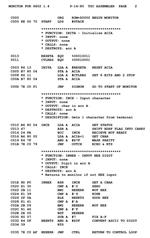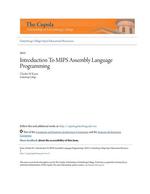Other

“This article explores the basic instructions needed to program a 32-bit ARM core, while building a foundational understanding of the micro-architecture. Assembly has a bad rap in today’s modern tech culture. Due to large amounts of RAM and processing …

“This book was written to introduce students to assembly language programming in MIPS. As with all assembly language programming texts, it covers basic operators and instructions, subprogram calling, loading and storing memory, program control, and the conversion of the assembly …

